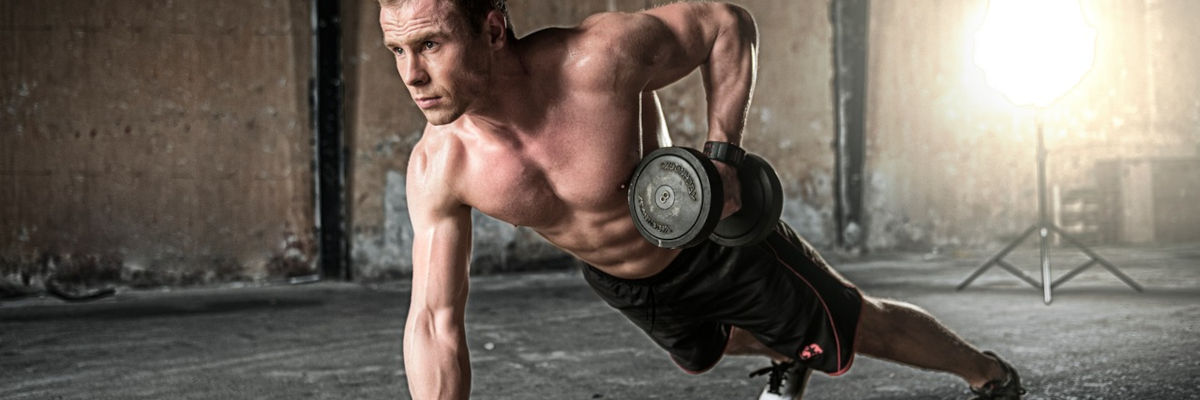If you are among those striving to achieve two fitness goals at once – muscle gain and fat loss, you have probably stumbled upon countless advice, some contradictory to others. The common question, "Can I lose fat and gain muscle at the same time?" might have crossed your mind, creating confusion and doubt. The concept of losing fat and gaining muscle has often been represented as a far-fetched goal. This article aims to debunk the myths, providing both a theoretical understanding and practical approach toward bodybuilding for fat loss. This comprehensive guide also showcases an effective bodybuilding workout for fat loss, helping you to forge a path towards your double victory.
Understanding the Concept: Can I lose fat and gain muscle at the same time?
Few debates in the fitness industry are as heated as the one surrounding the possibility of simultaneous fat loss and muscle gain. Can it be achieved, or is it a fitness unicorn, a thing of myths? To answer your burning question, "Can I lose fat and gain muscle at the same time?" the short answer is yes. However, achieving this requires careful consideration of several factors, including diet, exercise, and genetics.
Typically, losing fat calls for a calorific deficit, where you consume fewer calories than your body burns, using stored fat cells as a source of energy. Conversely, muscle gain demands a caloric surplus to nourish and repair the muscles post-training.
These processes seem to contradict each other, but they can indeed occur simultaneously. Science suggests that the key lies in optimal protein intake and resistance training.
Protein Consumption: A Key Factor
Adequate protein intake plays a crucial role in achieving both fat loss and muscle gain. Protein offers the necessary amino acids that serve as building blocks for muscle. It also spikes your metabolism since digesting and absorbing proteins require more energy than fats or carbohydrates. This means you burn extra calories digesting proteins than other macronutrients, allowing you to maintain a calorie deficit while providing sufficient nutrients for muscle growth. The key is finding the right balance in your diet.
Bodybuilding for Fat Loss: Setting Realistic Goals
The idea of bodybuilding for fat loss is not as simple as just lifting weights and expecting the fat to melt away. Strategically designed workouts play an integral role in promoting both fat loss and muscle gain. Endurance training combined with strength training can bring about desired results. Ultimately, the secret lies in consistency and the quality of workouts.
Patience, Persistence, and Progress
It's vital to set realistic expectations when embarking on bodybuilding for fat loss. A drastic transformation will not happen overnight. Initial progress might be slow, but persistence and consistency are key. Monitor your progress, tweak your diet and workout routines as needed, and most importantly, stay patient. Your journey to the perfect blend of lean muscle and low body fat is a marathon, not a sprint.
Despite commonly held beliefs, losing fat while gaining muscle is entirely possible, ushering in a new era of 'Double Victory'. To achieve this, it is necessary to understand the scientific principals of nutrition and exercise that work harmoniously to bring about such transformation.
Understanding the Basics
Generally, to lose weight, we need to burn more calories than we consume - known as a caloric deficit. Conversely, to build muscle, an excess of calories - known as a caloric surplus - is desired. These seemingly contradictory goals bring into question whether fat loss and muscle gain can occur together. However, research has revealed that, under specific conditions, we can manipulate our body composition to allow this.
The secret lies in balanced nutrition, regular exercise, optimizing sleep, and proper hydration. This echelon of disciplines, if executed correctly, can empower you with a healthier, leaner, and stronger body. The journey to achieving this double victory can be broken down into four main segments: nutrition, resistance training, cardio, and recovery. Let’s dive deeper into each.
Nutrition: The Cornerstone
Meticulous attention to what you feed your body is critical in your quest for double victory. It's essential to eat the right amount of macronutrients: proteins, carbohydrates, and fats. Higher protein intake supports muscle gain, while a moderate amount of good fats and carbohydrates cater to overall health and energy requirements. Keep in mind that the quality of food sources is as important as the quantity being consumed. Opt for whole, unprocessed foods over processed ones.
Resistance Training: Build your Fortress
Resistance training, whether it’s weight lifting or body-weight exercises, plays a vital role in muscle development. Unlike cardio exercises that focus on burning calories, resistance training concentrates on muscle growth, which subsequently boosts metabolism - an integral factor in burning fat.
Cardio Exercises: A Key to Fat Loss
While resistance training aids in muscle development, cardio shouldn't be left out. Incorporating high-intensity interval training (HIIT) or moderate-intensity steady-state cardio can enhance your body's fat-burning potential. Balancing both resistance and cardio training will make you lose fat while gaining muscle.
Recovery: Allow your Body to Heal
Last but not least, recovery is a central aspect of launching a successful 'Double Victory' campaign. This includes optimal sleep periods and proper hydration. Restorative sleep helps in muscle recovery after intense workouts while staying hydrated is crucial to keep the body functioning at its best.
In conclusion, achieving simultaneous fat loss and muscle gain is a delicate balancing act but it’s not impossible. Through careful manipulation of your diet, workouts, and recovery, these seemingly conflicting goals can harmoniously coexist, propelling you towards your double victory.




